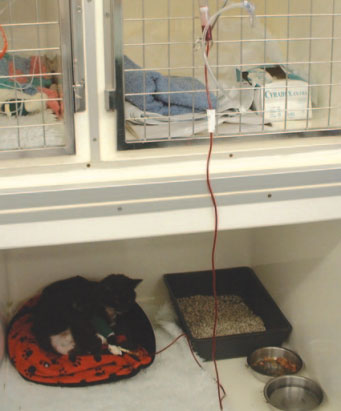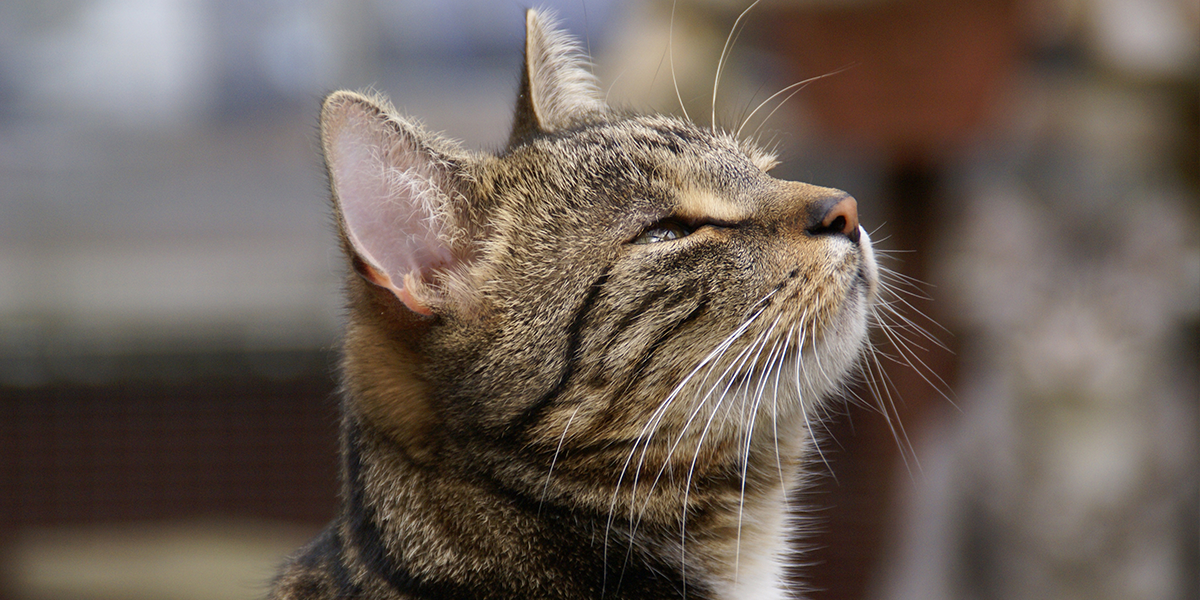Offering your cat to be used as a blood donor
A variety of conditions can cause severe anaemia in cats and sometimes this results in the need for a life-saving blood transfusion.
Other blood products such as plasma (the fluid in blood without the blood cells) may also be required on occasions for management of some conditions.
Unfortunately, cat blood cannot be stored in the same way that human and dog blood can, so ‘blood banks’ do not work for cats. This means that either cats have to be kept specially to be blood donors (which is done at some large veterinary clinics and universities) or, in some situations, other pet cats can be used as blood donors.
Although pet cats can be used as blood donors, and you may wish to consider offering your own cat as a possible blood donor, this is not entirely straightforward. Finding a cat that is suitable to donate blood with safety (for both the donor cat and the recipient) requires important criteria to be met. This article focuses on the implications for the donor cat, and explains what owners can expect as far as the process of donating blood is concerned. If you are interested in offering your cat as a possible donor, talk to your local veterinary clinic about what their needs are, or whether there may be other local clinics that may have a need for donors.

Consent for donation
Unlike humans, a blood donor cat cannot give consent itself, and it is the owner that needs to give consent on its behalf. If you are considering volunteering your cat as a blood donor, any potential risks to your cat must be carefully evaluated first. This is especially important in cats where the risks of donating blood may be higher than in people or dogs.
What are the risks for a cat that donates blood?
Most cats, for their own benefit, need to be sedated for blood donation and this in itself carries a small risk. The drugs used in sedation often lower blood pressure, and donating blood itself can also lower blood pressure due to removing some of the circulating blood volume. These effects on blood pressure and circulation can be particularly important if a cat has some underlying disease that neither the owner or the vet is aware of – especially things like heart disease and kidney disease.
What can be done to minimise the risks of blood donation?
A series of checks should be performed to ensure your cat is suitable for use as a blood donor:
General checks before blood donation
Your cat’s weight, age and health status should be carefully assessed at the veterinary practice. Donor cats should ideally weigh more than 4 kg (but should not be overweight), aged between 1 and 8 years (ideally, 1 to 5 years old), have a calm temperament and not get unduly stressed when visiting the veterinary clinic.
Health checks the vet will perform should ideally include:
- A full clinical examination of the cat
- Measuring the cat’s blood pressure
- Ideally a heart ultrasound to rule out occult/hidden heart disease
- Blood tests to check the cat’s red and white blood cells – especially the PCV (Packed Cell Volume), which is a measure of the quantity of red blood cells in the cat’s blood
- Blood (and possibly urine) tests to check kidney and liver function
- Blood tests to rule out certain infectious disease (such as feline immunodeficiency virus, feline leukaemia virus and haemoplasma infections)
A donor cat should be free of any significant illnesses and be fully vaccinated. An ideal donor will also be an indoor-only cat, as this significantly reduces the risk of many infectious diseases that could potentially be transmitted to a recipient cat. Donor cats should also not already have donated blood in the previous four weeks.
Giving your consent
The risks involved should always be explained to you before you agree to volunteer your cat for blood donation, along with what tests and examinations will and will not be done. You will need to sign a consent form to say that you understand the procedure and risks, and that you give consent for blood donation to proceed.
Precautions during and after blood donation
- Because cats are usually sedated for blood donation, food should be withheld for 4–5 hours before a donation is performed to reduce the risk of vomiting occurring.
- All relevant pre-donation checks should be performed (see above)
- The blood donation involves collecting blood from a large vein (jugular vein) in the neck, this is usually collected quite slowly over about 30 minutes. Generally no more than 40-50 ml blood is collected from any one cat.
- Whenever an appreciable volume of blood has been collected, a donor cat should be put on an intravenous fluid drip for up to several hours, to help replace the fluid that has been lost and maintain blood volume and blood pressure. Usually, a catheter will be placed in a front leg to administer the initial sedation and also to allow for the intravenous fluids to be given.
- Cats should always be kept warm and monitored closely after blood donation. They are usually fed as soon as they have recovered from the sedation and are awake enough to eat.
Common questions and concerns
So long as cats are considered to be suitable for use as donors, and have been thoroughly assessed prior to being used (according to the criteria outlined above), and so long as all necessary precautions are undertaken, the risks to a donor cat are low, and providing blood for a recipient cat may genuinely be a life-saving procedure. However, with any intervention such as blood donation, small risks remain despite undertaking all appropriate precautions.
For more information, please visit: https://icatcare.org/advice/blood-products-transfusion/
Don’t rush your decision
It is important not to rush into the decision to volunteer your cat to donate blood – you must be comfortable with what is going to happen, and confident that all the necessary precautions are being taken. Discuss everything with your vet, and ask them to explain anything you are unsure about.
International Cat Care’s veterinary division (the International Society of Feline Medicine) has produced guidance for cat carers and owners on blood transfusions. If your vet has not already seen this, it may be a good idea to refer them to it:
Thank you for visiting our website, we hope you have found our information useful.
All our advice is freely accessible to everyone, wherever you are in the world. However, as a charity, we need your support to enable us to keep delivering high quality and up to date information for everyone. Please consider making a contribution, big or small, to keep our content free, accurate and relevant.
Support International Cat Care from as little £3
Thank you.
Donate Now


